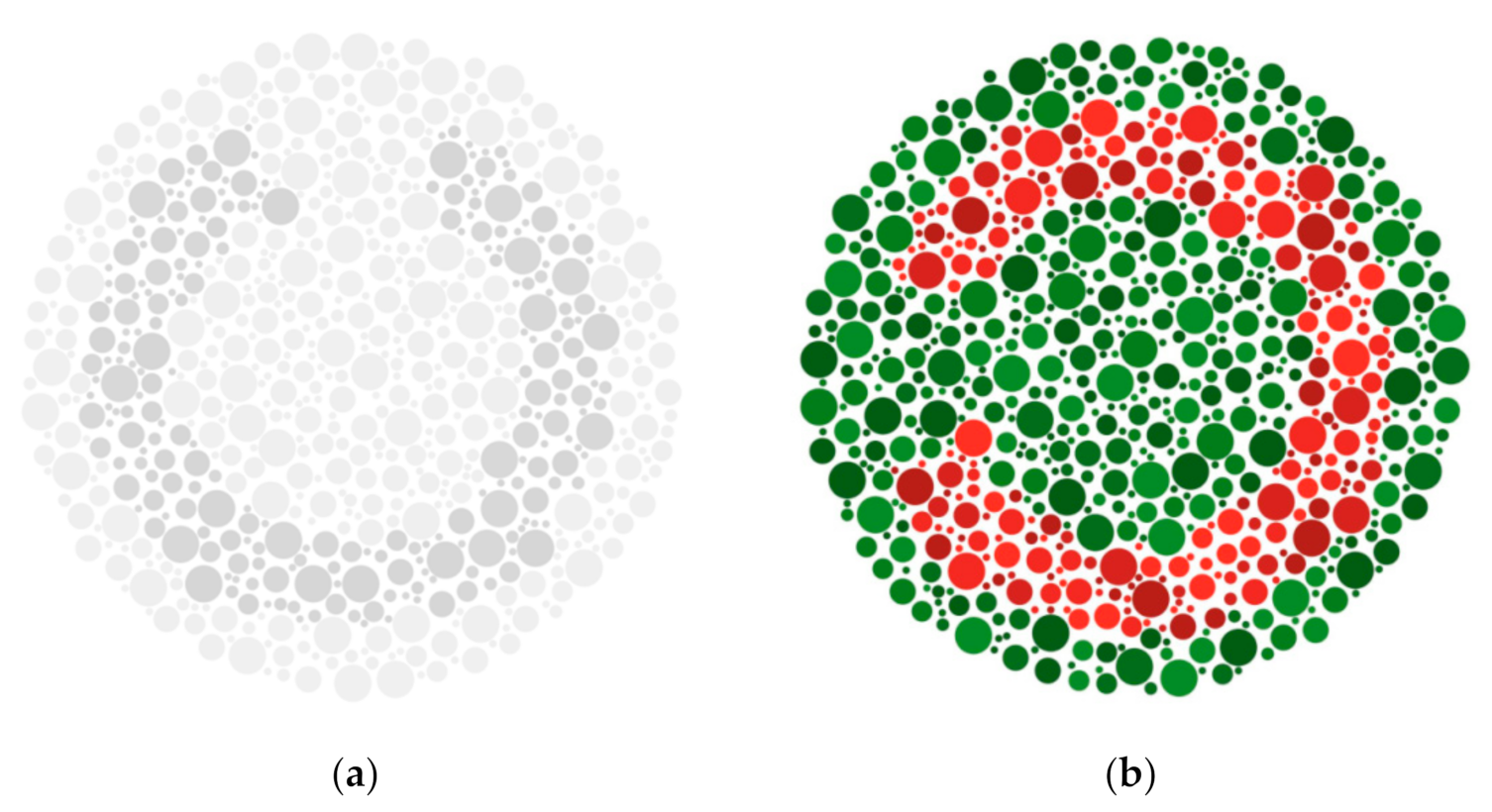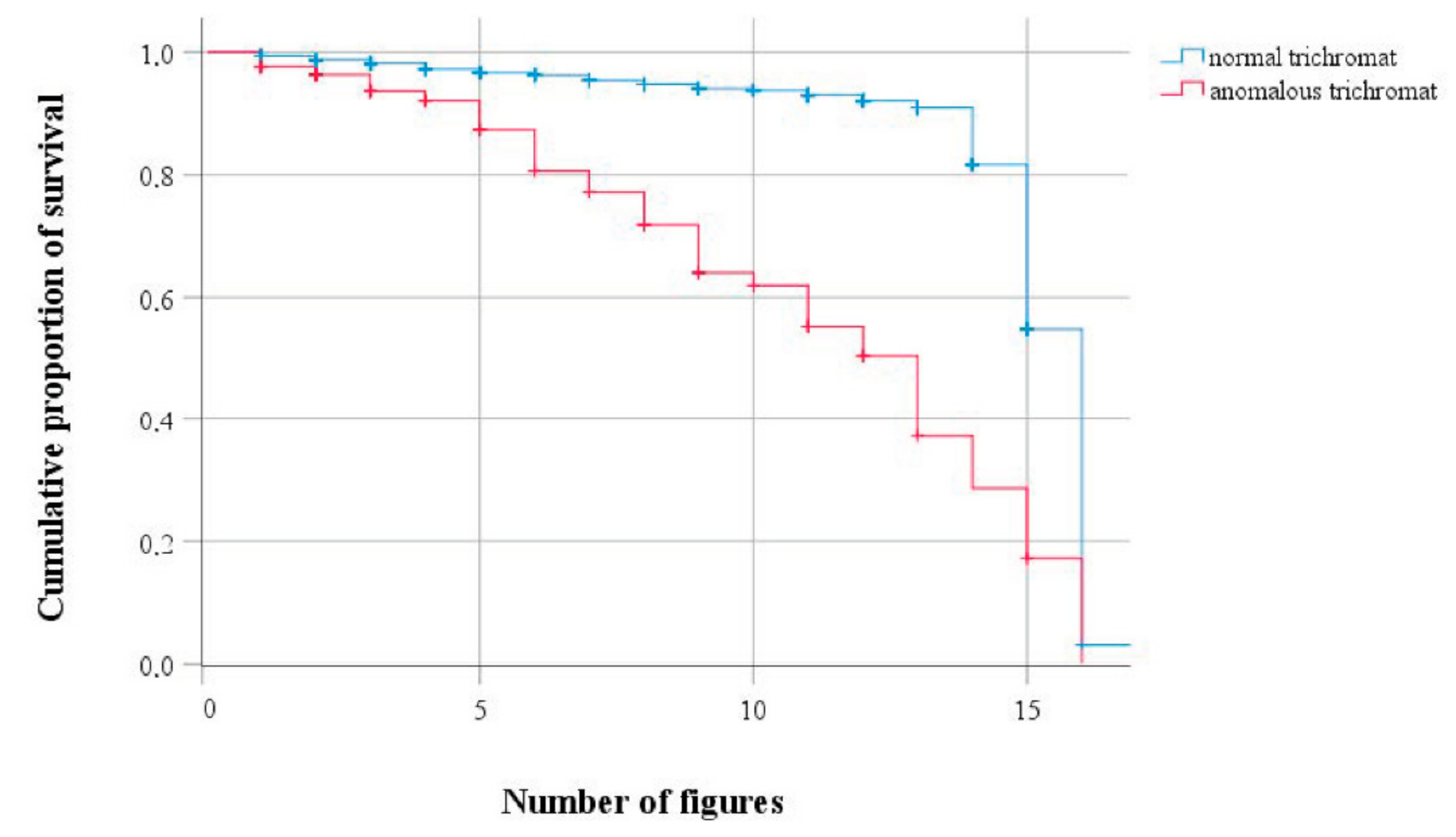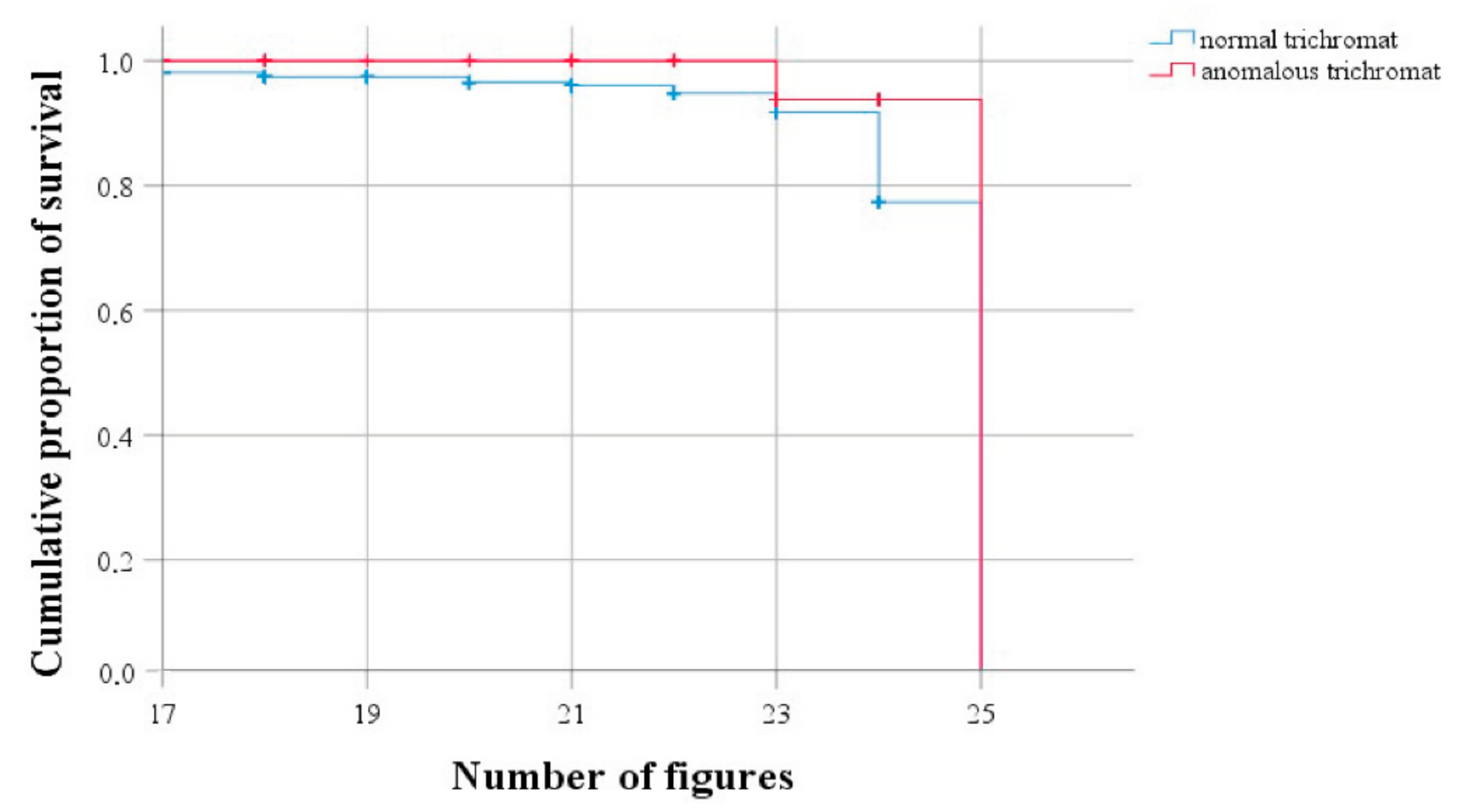3.1. Analysis of Success
Observing the parameter estimate outputs, we can see that the parameters that should be integrated in the model can be unequivocally detected. Based on the results it can be stated that the following parameters are significant (α < 0.05): subject × success × image, success × image, subject, success and image (see
Table 3). Therefore, we excluded the following parameters from the model: subject × success and subject × image.
The loglinear model was built up based on these relevant parameters. Further on the parameter of success was excluded, because the HILOGLINEAR module of SPSS estimates the output of the categorical parameters, but it cannot handle covariant variables. Finally, when the model with the covariant parameters was tested, the effects of success and image were also excluded and only the effect of their interaction remained in the model. Based on the results of the model subject x success and subject x image interactions had no significant effect and were left out from the final model. (The success×ordinal number parameter was included, because as the ordinal number increases, the task is getting harder to complete, hence the rate of success decreases (the coefficient is −0.106; see
Table 4).
Success was not significant, so it was excluded from the final model, which only included the following parameters: success × image, success × ordinal number and subject × success × image. The loglinear model fits the data as well as the full saturated hierarchical model (LR
χ2 = 0.384;
p = 0.535). In the loglinear model, each three parameter interactions were significant at the 10% level (see
Table 5).
The coefficient of success×image is −0.102. Because of the loglinear model, this value was multiplied by four, and we took the exponential of this value with base
e (odds ratio = 0.665). We prepared the analysis of the cross-tabulation of the success × image parameter for the validation of that (see
Table 6).
Based on the results of all subjects, there were 285 successes and 77 failures in the case of achromatic images. Therefore, the odds of success are 285/77 = 3.701. Based on the results of all subjects, there were 498 successes and 218 failures in the case of colored images. Therefore, the odds of success are 498/218 = 2.284. By dividing the odds in the case of colored and achromatic images, the odds ratio is 2.284/3.701 = 0.617. It means, that the odds of a subject to find the orientation of a colored figure is 0.617 times of the odds of finding the orientation of an achromatic image. In turn, the odds of succeeding in the achromatic test is 1/0.617 = 1.621 times of the chance of that in the colored test. Thus, the odds of success in achromatic images is higher than that in colored images.
The coefficient of subject × success × image is 0.218. Because of the loglinear model, this value was multiplied by eight, and we took the exponential of this value with base “e” according to Formula (4) (odds ratio = e
8 × 0.218 = 5.72). The analysis of the cross-tabulation of the subject × success × image parameter was prepared for the validation of that (see
Table 7).
In the case of the achromatic series of images, the odds of success of anomalous trichromats are 33/5 = 6.6 and 252/72 = 3.5 for normal trichromats. In regard to the proportion of these two odds, the odds ratio is 6.6/3.5 = 1.88. This shows that, in the case of the achromatic series, anomalous trichromats find the orientation of the Landolt-C figures easier than normal trichromats. In the case of the colored series of images, the odds of success of anomalous trichromats are 38/45 = 0.844 and 460/173 = 2.66 for normal trichromats. Therefore, the odds ratio is 0.844/2.66 = 0.317. This shows that, in the case of the colored series, anomalous trichromats find the orientation of the Landolt-C figures with more difficulty. Comparing the odds ratios (1.88/0.317 = 5.93), it can be concluded that, in the case of achromatic images, the chance that anomalous trichromats find the orientation of the Landolt-C figure is 5.93-times higher than that for normal trichromats.
The estimation of the loglinear model is similar, as the value calculated of the model is 5.72, while the value of the chance ratio for success is 5.93 (5.93−5.72 = 0.21).
The estimate for the success × ordinal number parameter is −0.0353, hence even this parameter is significant. Its exhibitor based on e is 0.965. It can be stated that if the ordinal number increases with one (hence, the next, more difficult task appears) the chance of that the subject will succeed is 0.965-fold of the chance of failure. With other words as the Landolt-C figures get more difficult to distinguish from the background the chance of success decreases by 3.5% in average, so the chance of failure increases.
3.2. Analysis of the Parameters of the Eye-Tracker
The parameters of the eye-tracker were ranked, and the average ranks were calculated in the case of ties. A generalized linear model was run, based on the new, ranked eye-tracker parameters. The SRH test was calculated on the results of the generalized linear model. In this test the F-test of the between subject effects is transformed to χ2-test and the p-value is corrected based on that. The SRH test is the non-parametric equivalent of the two-way ANOVA test, including the interaction terms as well.
Hereinafter the results are introduced in two parts regarding the applied two AOIs. The first part includes the eye-movement variables of the ring of the Landolt-C figure, as the follows: TTFF, time to first fixation; FFD, first fixation duration; FD, fixation duration; FC, fixation count; VD, visit duration; VC, visit count; and TTFMC, time to first mouse click. The second part details the following eye-movement variables of the hiatus of the Landolt-C figure: ttff2, FFD2, FD2, FC2, VD2 and VC2.
3.2.1. Analysis of the Eye Movements Corresponding to the Ring of the Landolt-C Figure
Only those parameters are displayed that significantly affect any of the parameters based on the SRH test (see
Table 8).
Those combinations of variables were analyzed in detail that were significant even in the loglinear model (success × image and success × image × subject). Regarding the success × image × subject parameter, each variable is significant, excluding FFD. Regarding the success × image parameter, each variable is significant, excluding FFD and TTFMC. The following cross-tabulation tables of image x success parameter considers the results of each subject. Time to first fixation was longer in the case of failure than in the case of success. The longer fixation time increased the chance of failure (see
Table 9).
Fixation duration was always longer in the case of the colored image series than in the case of achromatic images. In the case of success, the duration of fixation decreased to the third part of that in the case of failure. The increase of the duration of fixation went hand in hand with the increase of the chance of failure (see
Table 10).
The visit duration was longer in the case of colored images, especially in the case of failure (see
Table 11).
The following cross-tabulation tables of subject × image × success parameter consider even the two groups of subjects. Based on the analysis of the experienced correspondences, it can be stated that, in the case of failure, anomalous trichromats fixated the achromatic figures significantly longer. Normal trichromats fixated the colored images shorter in time when they succeeded than in the case of failure. In the case of achromatic images, there was no significant difference between subjects when they succeeded (see
Table 12).
When failed, the visit duration of anomalous trichromats was longer in the case of achromatic images and shorter in the case of colored images than normal trichromats. Normal trichromats visited the colored images to a shorter time when they succeeded. In the case of achromatic images, there was no significant difference between subjects when they succeeded (see
Table 13).
In the case of the achromatic image series, when anomalous trichromats succeeded, their time to first fixation was longer than in the case of failure. For normal trichromats, this was the other way around. The time to first fixation of colored images was longer in the case of false answers than in the case of right answers; it was shorter both for normal and anomalous trichromats. In the case of achromatic images and failure, the time to first fixation of normal trichromats was three times longer than that of anomalous trichromats (see
Table 14).
3.2.2. Analysis of the Eye Movements Corresponding to the Hiatus of the Landolt-C Figure
In the case of the parameters regarding to the hiatus of the Landolt-C figure, less cases of significant effects were found. Three variables affected the subject parameter significantly (TTFF2, FFD2 and FC2), two variables affected the subject × success parameter significantly (FD2 and VD2) and only one variable (TTFF2) affected both subject × image and success × image × subject parameters (see
Table 15).
When anomalous trichromats succeeded, their time to first fixation was more than twice as long for achromatic images; however, for colored images, the time before the first fixation was much shorter than that of normal trichromats. It took less time for normal trichromats than for anomalous trichromats to fixate on the hiatus in the case of achromatic images and success. In the case of colored images, anomalous trichromats needed shorter time to first fixation when they succeeded than when they failed (see
Table 16).
3.2.3. The Survival Analysis of the Success of Subjects
With the survival analysis, the chance of success decrease is observed in the function of the ordinal number of the images shown to the subjects. Anomalous and normal trichromats were considered separately (see
Figure 2 and
Figure 3). In this analysis, the survival function shows the probability of success in the function of the ordinal number of the images. The observed event happened when the subject failed to find the hiatus of the Landolt-C figure. The first value of the survival function belongs to 0 that refers to the beginning of the observation. At this point obviously none of the subjects failed (or succeeded) to find the hiatus of the Landolt-C figure; therefore, the function takes its maximal value: 1 (in terms of probability of success: 100%).
Whenever an event happens, i.e., the subject fails to detect the hiatus, the value of the survival function decreases. The “+” sign denotes that the observed event did not happen (censored), the subject succeeded to find the hiatus and the function keeps its current value.
Figure 2 and
Figure 3 show the survival functions calculated for the achromatic and colored image series, respectively.
As it is shown in
Figure 2 and
Table 17, in the case of the colored image series, anomalous trichromats (red plot) were significantly less successful in finding the hiatus of the Landolt-C than normal trichromats (blue plot). The decrease of the survival function of the anomalous trichromats is constantly steeper than that of the normal trichromats regarding the first 13 images. After the ordinal number 13, a steeper decrease can be detected even in the survival function of the normal trichromats. A final cutoff to zero was predestinated, since the last element of the image series was designed, as neither normal nor anomalous trichromats could find the orientation of the Landolt-C figure; the chromatic difference between the background and the Landolt-C figure reached and even exceeded the limit of the just noticeable difference both for anomalous and normal trichromats.
Figure 3 shows that the relations of the two survival functions changed in the case of achromatic image series. In this case, the survival function of anomalous trichromats (red plot) exceeds that of normal trichromats (blue plot). Even though
Table 17 reports that the result of this comparison is not significant, the graph shows that the first failure of anomalous trichromats occurred only at the ordinal number 23 (the eighth image in the achromatic series), while the survival function of normal trichromats decreases from value to value; even in the last two steps, the decrease of the survival function is steeper for the normals than that for the anomalous trichromats. The final cutoff to 0 value was predestinated just as explained in considering the colored-image series. Therefore, if we consider the range in which the task was possible to execute successfully for subjects, this graph shows that, in the case of the observed achromatic images, anomalous trichromats were more successful than normal trichromats.











